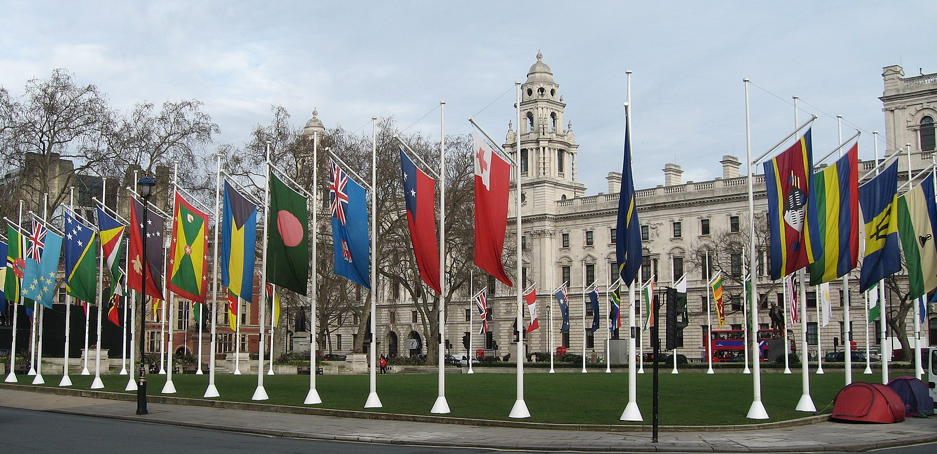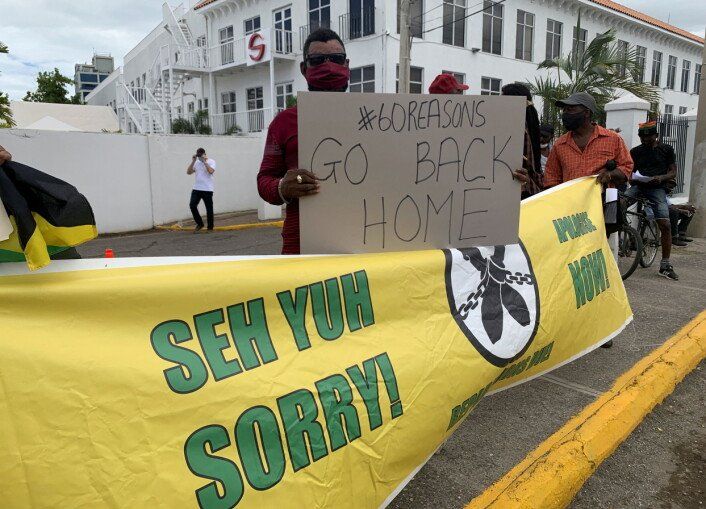The Visible Crown
An AHRC-funded project exploring the political and cultural significance of
Elizabeth II in the Caribbean, from 1952 to the present day.
About the Project
The Visible Crown is a major interdisciplinary project, funded by the AHRC and run by a team of researchers in the UK and the Caribbean. It interrogates the political and cultural significance of Elizabeth II in the Caribbean, covering both the countries and dependencies where the British monarch remains head of state, and the four countries which opted to become republics (Barbados, Dominica, Guyana, and Trinidad and Tobago). Barbados's move to republic status on 30 November 2021 provoked questions about the history and future of the monarchy throughout the Caribbean. Why, this project asks, has Barbados succeeded in this endeavour where other Caribbean states have failed? To what extent is there political will or popular support to effect such a change elsewhere? Has, indeed, 'time come' for the Crown in the Caribbean?
This project begins in 1952, with the accession of Elizabeth II, and goes up to the present day, including the death of the Queen and the accession of Charles III. It examines the significance of the monarch (as a person) and the Crown (as an institution) across a period that encompasses decolonisation, independence and present-day calls for constitutional reform. It seeks to understand the factors that can explain the surprising continuity of the Crown in the region, and explores how attitudes towards monarchy, and to Elizabeth II, have changed over time. It considers how monarchy has featured in evolving narratives of the nation, and in ideas of Britishness in the region. The project will stimulate broader questions about relations between Britain and its former colonies, and about the dynamics of decolonisation, not as an achieved end, but as an ongoing process. These issues have been particularly acute in the Caribbean where a history of slavery, indentureship and colonialism coexists, in the form of persistent links to the Crown, with real symbolic and material connections to the former colonial power.
The project, uniquely, addresses all eight Caribbean 'realms': Antigua and Barbuda, the Bahamas, Belize, Grenada, Jamaica, St Kitts and Nevis, St Lucia, St Vincent and the Grenadines. It also considers the countries that opted to become republics: Dominica, Guyana, and Trinidad and Tobago and, most recently, Barbados.
The project emphasises hitherto neglected Caribbean sources and perspectives in order to advance knowledge about the continued role of the British Crown in former colonies, and to inform debates about its future. It combines archival work in the UK and the Caribbean with oral history interviews and a unique, region-wide survey. Original research data generated by this first-ever survey of popular attitudes to the monarchy and the gathering of people's memories and stories will be of immense value to academics, but also to all those engaged with, advising on or agitating for constitutional reform in the Caribbean, and in the Commonwealth realms more generally.
The project is fully interdisciplinary, bringing together a team of political historians, political scientists, cultural historians, and oral history practitioners from the UK and the University of the West Indies.
Project News and Updates

Follow us on Twitter/X:


